Much like the folk dances of North India, South Indian folk dances too, have historical and cultural significances. In fact, many of the dances practiced in the Southern part of the country resemble folk dances that are practiced in the North. For instance, ‘Mayil Attam’ of Tamil Nadu is similar to ‘Mayur Nritya’ of Uttar Pradesh and ‘Puliyattam’ is the Southern equivalent of ‘Baagh Naach’ of Odisha. Having said that, there are manydistinctive dance forms and those can only be seen in South India.
Parai Attam or Thappattam
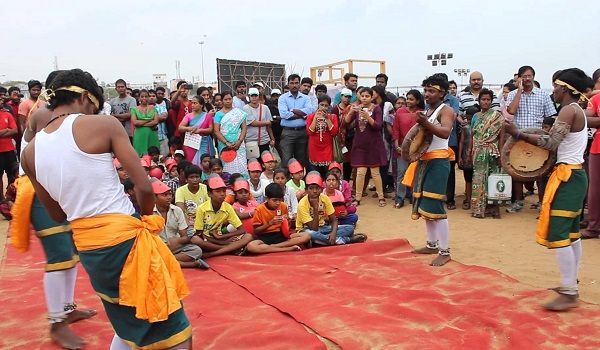
Image Credit: Youtube.com
Region/Area: Tamil Nadu
Occasion: Performed in festivals and rituals
Highlight: Only one instrument is used throughout the performance
‘Parai’ is a percussion instrument which is played using two wooden sticks. Since it is easy to carry, men folks perform acrobatic dance moves while playing the instrument. Performed in festivals and rituals, Parai Attam is one of the oldest folk dances of India and hence is considered important by the people of Tamil Nadu.
Kummi
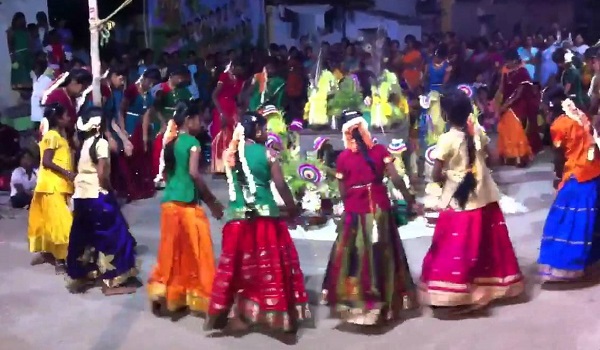
Region/Area: Tamil Nadu
Occasion: Performed in festivals and rituals
Highlight: The dance requires no musical instruments
Performed by women during certain festivals and rituals, Kummi is a unique dance form as it does not require the support of any musical instrument. Women form a circle and go about dancing in a circular motion. The songs are sung by themselves and their claps provide the much needed beats.
Kolattam
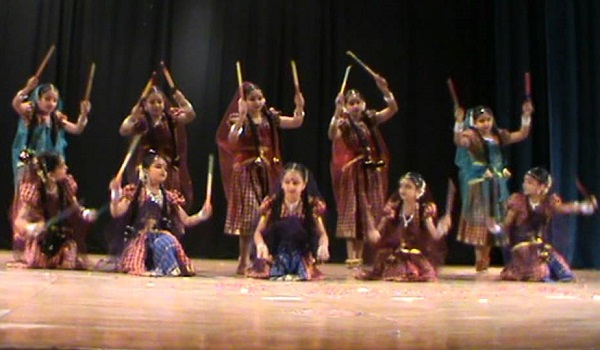
Image Credit: Youtube.com
Region/Area: Tamil Nadu/ Andhra Pradesh
Occasion: Performed during festivals
Highlight: The dancing involves formulation of beats
Also known as Kolannalu in Andhra Pradesh, Kolattam of Tamil Nadu is the South Indian equivalent of the famous Dandiya dance of Gujarat. Women folks use two sticks to formulate the beats and dance according to the tune of the songs sung.Dancers usually move in circular motion and go about striking the sticks of their fellow dancers.
Karagattam
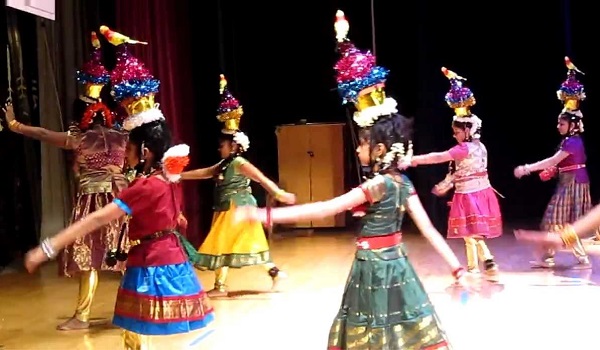
Region/Area: Tamil Nadu
Occasion: Performed while worshipping the local deity
Highlight: Dancers balance pots on their head
Karagattam is usually performed in temples to thank and praise the Goddess of rain – Mariamman. The dance is categorized into two forms – Aatta Karagam and Sakthi Karagam. While Aatta Karagam moves away from its basic purpose since it is performed to entertain the masses, Sakthi Karagam is strictly performed to hail the Goddess of rain. The dancers are usually women and they gracefully move their lower body while balancing huge pots on their head.
Mayil Attam
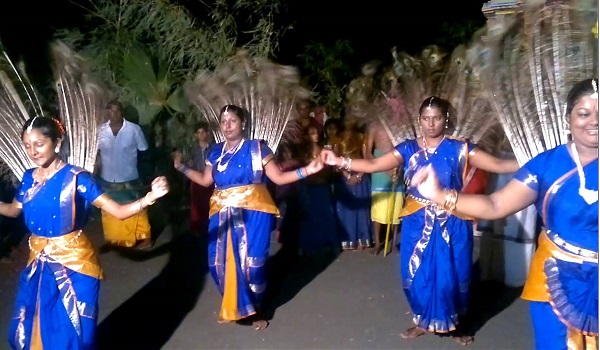
Image Source: YouTube.com
Region/Area: Tamil Nadu
Occasion: Performed in festivals
Highlight: Young girls are dressed to look like peacocks
Also known as the peacock dance, Mayil Attam is the South Indian equivalent of Mayur Nritya of Odisha. Young girls don colorful attire which comes with peacock plumes. The basic idea of the dance is to emulate the moves of a peacock which is well supported by musicians.
Paampu Attam
Region/Area: Tamil Nadu
Occasion: Performed during festivals
Highlight: Young girls are dressed to look like snakes
Also known as the snake dance, Paampu Attam is performed by young girls who wear specially designed costumes that look like snake’s skin. Since snakes are worshipped in many parts of Tamil Nadu, Paampu Attam is considered as an important dance form. The dancer often lie-down on their back and move along the ground to emulate the movement of a snake. They also intimidate the viewers by using their hands to represent the hood of a snake.
Oyilattam

Region/Area: Tamil Nadu
Occasion: Performed in village festivals
Highlight: Performers tie colorful handkerchiefs to their fingers which adds to the overall splendor
Initially performed only by the men folk, Oyilattam gained popularity in the last two decades, which prompted the women folk too, to accompany the men. Thavil, a percussion instrument is the only musical accompaniment used and the ankle bells worn by the dancers add to the beats. The performers tie colorful handkerchiefs to their fingers which add to the overall splendor.
Therukoothu
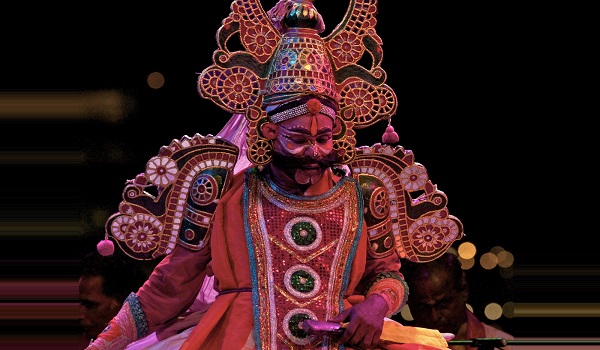
Image Source: https://sushmitharamakrishnan.files.wordpress.com
Region/Area: Tamil Nadu
Occasion: Performed in village festivals
Highlight: Dramatized make-up of the artistes
Performed only by men, Theru Koothu is usually held in villages where three or four roads meet. Dramatized make-up and attire, which include head dresses, shiny shoulder plates and colorful skirts, make the entire play appealing. The play usually conveys stories from the Hindu epics Ramayana and Mahabharata in the form of dance and story-telling.
Garadi
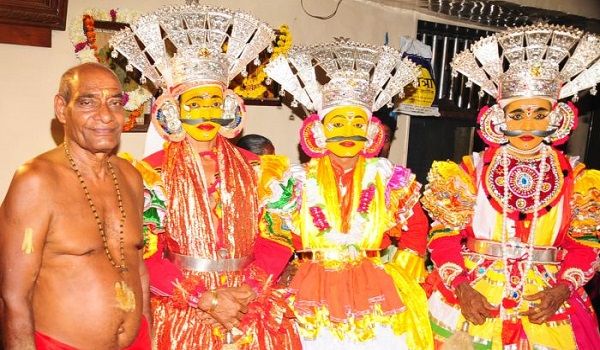
Region/Area: Puducherry
Occasion: Performed in festivals
Highlight: The dancers are dressed to look like monkeys
This particular dance form has a mythological connection as it is believed that the Vanars (monkey soldiers) from the Hindu epic Ramayanam performed this dance to celebrate the victory of Lord Ram. Hence, dancers today dress like monkeys and perform acrobatic moves. The dance is the main attraction of almost all festivals held in Puducherry.
Padayani
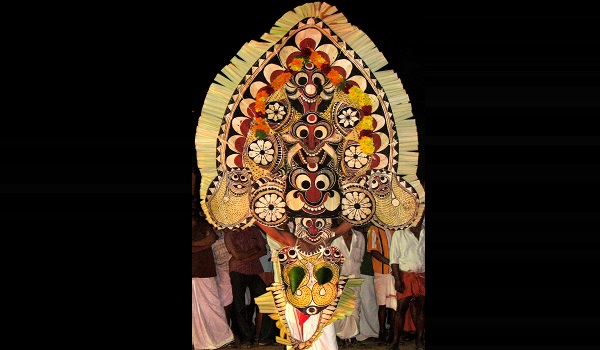
Image Source: Wikipedia.org
Region/Area: Kerala
Occasion: Performed in festivals
Highlight: The dancers wear massive masks called ‘Kolams’
Padayani is one of the most colorful and popular dance of Southern Kerala. Padayani derives its name from ‘Paddeni’ which is a set of temples. The dance form is associated with the festivals celebrated in these temples. The dance involves a series of divine and semi divine imitation and the performers are seen wearing huge masks representing different deities.
Oppana
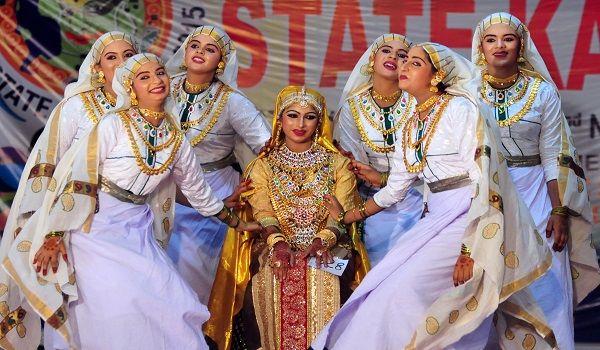
Region/Area: Kerala
Occasion: Performed in weddings
Highlight: The bride is always the chief spectator of this dance form
Performed in weddings by young girls, Oppana belongs to the Mappila community of Kerala. The bride is made to sit on a chair and the dancing happens around her. Girls dance and clap in a rhythmic manner and are duly supported by a host of musicians. Pump organs, Tabla, Ganjira and cymbals are used to create music.
Theyyam
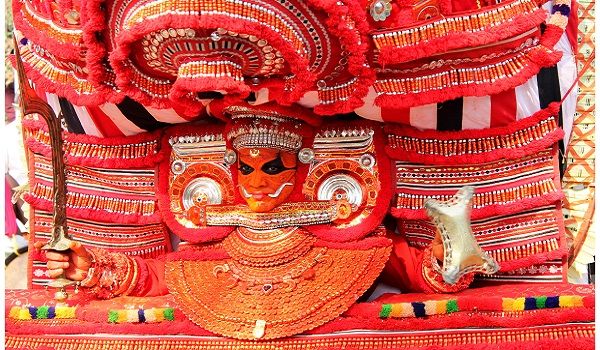
Image Source: Youtube.com
Region/Area: Kerala
Occasion: Performed to praise Goddess Kali
Highlight: The dancers paint their faces with vibrant colors which add to the overall effect
Also known as ‘Kaliyattam’, Theyyam is one of the most important folk dances of Kerala. The dancers paint their faces with vibrant colors and are usually dressed in red-colored clothes. The dance form is used to convey mythological stories and is often performed to praise Goddess Kali. It is performed only by the men folk.
Thidambu Nritham
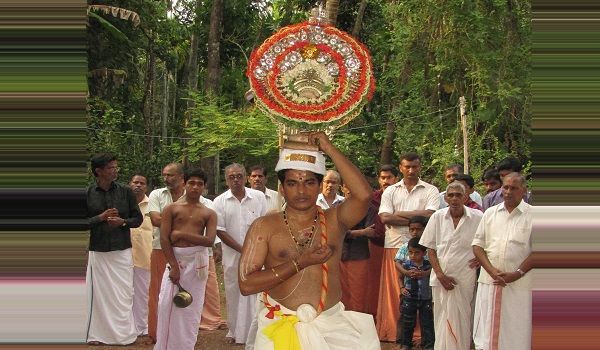
Region/Area: Kerala
Occasion: Performed in temples as part of a ritual
Highlight: Dancers carry replica of the deity on their head
Performed in a certain ritual in Kerala, men folks carry the replica of the deity on their head and dance to the rhythm of drums. It is one of the oldest dance forms of Kerala. The dancing involves hopping on one leg which makes it that much more difficult and interesting to watch.
Perini
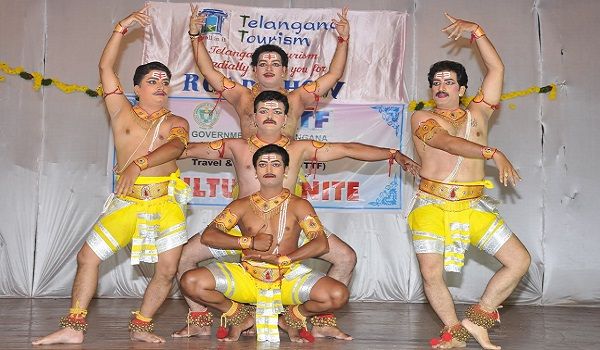
Image Source: YouTube
Region/Area: Telangana
Occasion: Originally a war dance, it is now performed while worshipping Lord Shiva
Highlight: The dance involves acrobatic moves
The Perini Thandavam is a male dance of the warriors. As part of a tradition, the warriors performed this dominant dance in front of the idol of Nataraja or Lord Shiva, before leaving for the battlefield. In earlier times the rulers of the Kakatiya dynasty patronized this form of dance. The Perini dance is performed to the accompaniment of the beat of the drums.
Thapetta Gullu
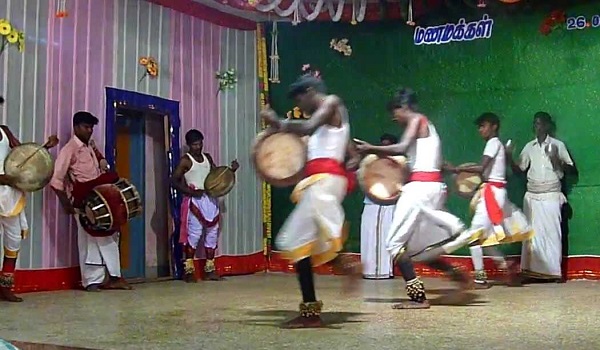
Region/Area: Andhra Pradesh
Occasion: Performed in festivals
Highlight: The dancers wear tinkling bells which makes a unique sound
Thapetta Gullu is performed in the Srikakulam district of Andhra Pradesh. Usually, a group of ten or more than ten dancers participate. The local Goddess is praised as part of the performance. The dancers play drums, which hangs around their neck and dance to the beats they make. They also wear tinkling bells around their waist.
Dollu Kunitha
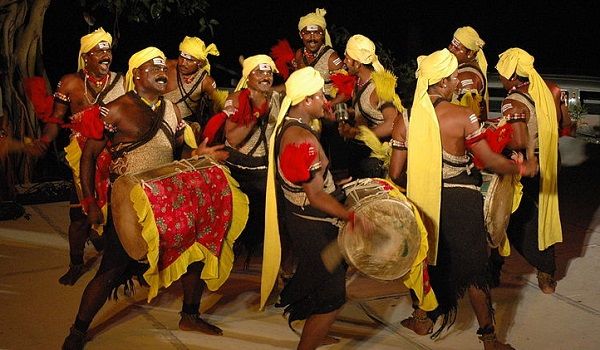
Region/Area: Karnataka
Occasion: Performed in rituals
Highlight: The dance involves quick movements
There are many rituals dances in Karnataka and Dollu Kunitha is one of them. Performed to the vigorous beats of drums, the dancing involves quick movements and group formations.The songs used in this dance usually have religious and battle fervor.
Beesu Samsale
Region/Area: Karnataka
Occasion: Performed during worship
Highlight: Dancers use cymbals that produce interesting sound
Also known as Kamsale Nritya, this dance form involves a group of men. The dancers carry a cymbal (kamsale) on one hand and bronze disc on the other. This dance has a historical significance as it is associated with the worship of Male Mahadeshwara.



